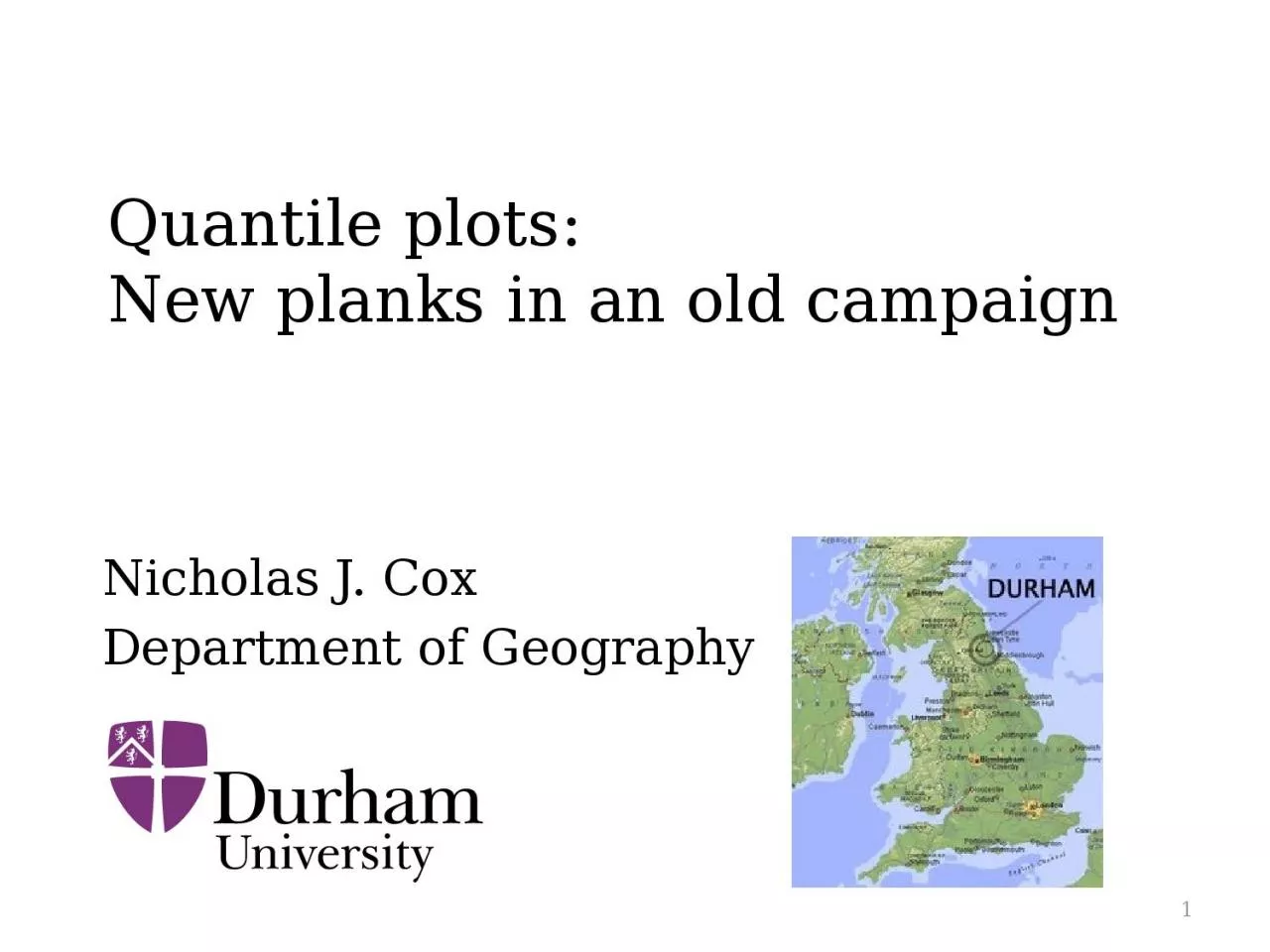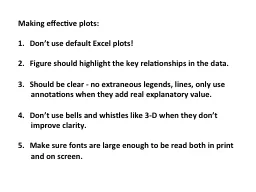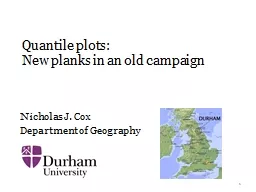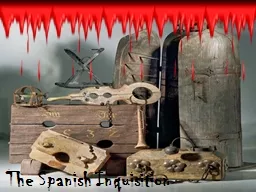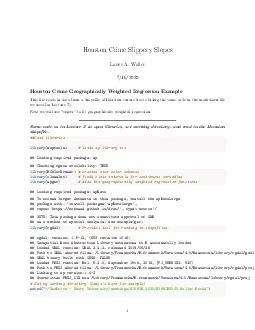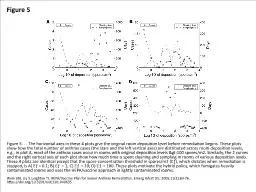PPT-Quantile plots: New planks in an old campaign
Author : phoenixbristle | Published Date : 2020-08-28
Nicholas J Cox Department of Geography 1 Quantile plots Quantile plots show ordered values raw data estimates residuals whatever against rank or cumulative
Presentation Embed Code
Download Presentation
Download Presentation The PPT/PDF document "Quantile plots: New planks in an old ca..." is the property of its rightful owner. Permission is granted to download and print the materials on this website for personal, non-commercial use only, and to display it on your personal computer provided you do not modify the materials and that you retain all copyright notices contained in the materials. By downloading content from our website, you accept the terms of this agreement.
Quantile plots: New planks in an old campaign: Transcript
Download Rules Of Document
"Quantile plots: New planks in an old campaign"The content belongs to its owner. You may download and print it for personal use, without modification, and keep all copyright notices. By downloading, you agree to these terms.
Related Documents

